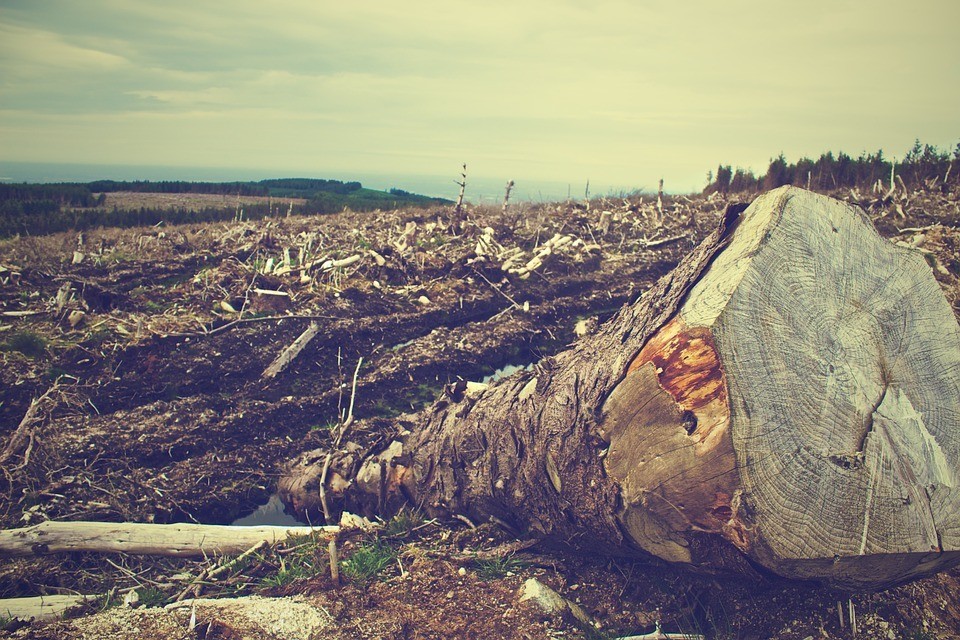
We know that forests are crucial to fighting global climate change, but another important and perhaps less appreciated aspect is the way they affect the climate on a much more local scale. Our research shows that deforestation in west Africa has made storms more frequent and thus increased the risk of disastrous flash flooding in the region’s coastal cities.
Much of west Africa was deforested throughout the 20th century, a process driven by agriculture, international trade in goods like cocoa, and the displacement of people by conflict. The rapid growth of cities, particularly along the coast, is also leading to deforestation in the surrounding regions.
With the increasing availability of satellites in recent decades, we can see how many of the pockets of remaining forest have disappeared in the space of just a few years. We analysed satellite images of clouds every 30 minutes since the 1990s to calculate trends in the frequency of storms.
In this humid, tropical region, rain is a near-daily occurrence in the wet season. We weren’t looking for this sort of rain, though. The storms we analysed are less frequent but produce deluges of several inches of rain in an hour or two, enough to flood low-lying areas and trigger torrents of water to run down particularly exposed catchments.
We found that while there was a general increase across the entire region that is linked to global warming, there was considerable patchiness in the trends, and this patchiness mapped on well to where deforestation was occurring.
Why would deforestation affect rainfall? In short, deforested areas get hotter than the remaining forest during the daytime. This warming triggers local breezes, and these atmospheric circulations can kick off storms.
The storm trends are particularly strong when deforestation occurs within a few tens of kilometres of the coast. Here rainfall is strongly affected by the sea breeze, with torrential afternoon downpours a common feature as the breeze brings moisture over the land. The sea breeze circulation results from the contrast between the cool ocean and warm land, and since deforestation means warmer land, that temperature difference is enhanced, which intensifies sea breeze storms.
We found that coastal areas that have experienced substantial deforestation saw afternoon storms happen twice as often compared with 30 years ago, while regions with more stable land cover saw 30-40% increases. The sharp increase in storminess around coastal deforestation hotspots is important because they coincide with many of the region’s cities, for example, Freetown and Monrovia, the capitals of Sierra Leone and Liberia, respectively.
Cities across the region often have inadequate drainage networks, particularly in their informal settlements, and so are very exposed to flash flooding. While it is well understood that removing trees increases runoff during a storm, our results show that deforestation also increases the likelihood of intense storms happening in the first place.
In Freetown, which in 2017 experienced a devastating flash flood triggering mudslides and the loss of more than 1,000 lives, there is a pressing need to incorporate the effects of these local changes in storm patterns alongside the effects of global warming.
The changes in rainfall we are seeing within a few kilometres of the coast are difficult to capture in the computer models used to make global climate projections. These conventional models lack the spatial detail to represent how deforestation and sea breezes affect storms on smaller scales. We are starting to use much higher resolution climate simulations to provide the information that planners need to design more climate-resilient cities. These models are able to capture the key physical processes and are at the cutting edge of climate science.
The emerging picture of increasing rainfall in a predominantly deforested landscape contrasts with what we know about processes in the Amazon rainforest, where most research has taken place. Similar to west Africa, atmospheric circulations play an important role when the removal of small patches of forest of several tens of kilometres increases rainfall. However, as the deforested patches get larger in Amazonia, rainfall decreases due to the drying effect of weaker transpiration.
The key difference between the two regions is the proximity of the ocean. In west Africa, the nearby ocean acts as a source of moisture for the atmosphere, and rainfall responses tend to be dominated by changes in the wind rather than humidity. This does not apply to the Amazon rainforest, where most of the deforestation is occurring many hundreds of kilometres inland. However, across the tropics, most deforestation hotspots do lie relatively close to an ocean, for example, in south-east Asia. For that reason, how storms respond to widespread deforestation is likely to resemble the increases seen in west Africa rather than the decreases found in Amazonia.